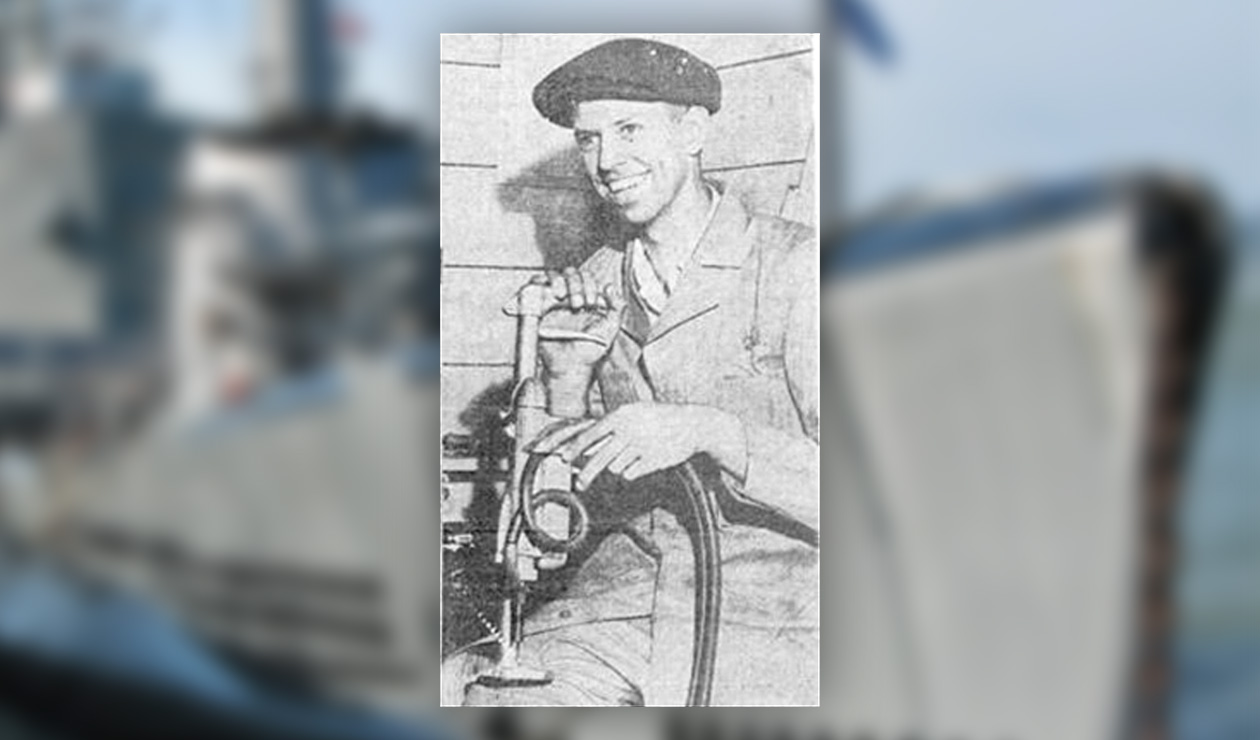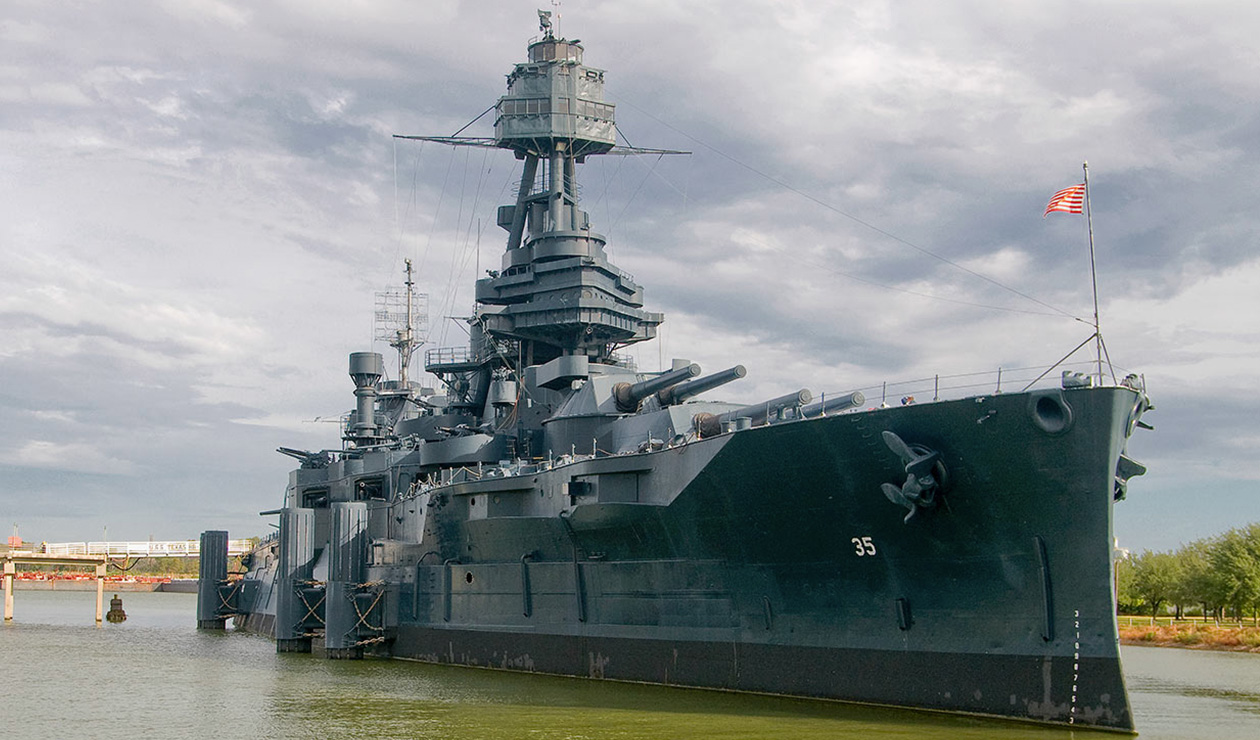Problem-Solving Was Ted Nelson's First Love
Ted Nelson®, the father of commercial stud welding, was a shipbuilder for the U.S. Navy, but he had the intellect and soul of an inventor.
Eighty years ago, many rural homes weren’t electrified, nor did they have indoor plumbing. Glenn Miller and Billie Holiday were at the top of the charts. A brand-spanking-new car could be yours for well under $1,000. And the state-of-the-art battleships — whole floating cities unto themselves — were that era’s equivalent of the Space Shuttle. While working at Mare Island Naval Shipyard Ted Nelson® had his big idea. And what an idea! Ultimately, Nelson’s advancement helped save the Navy so many man-hours that he earned top-of-the-line commendations and set in motion a legacy of excellence that remains on the leading edge of the industry to this very day.

The Mare Island Naval Shipyard, where Nelson® worked in the years leading up to and during World War II, was the Navy’s first base on the Pacific Coast, located just north of San Francisco and now a California Historical Landmark. In its day it was the United States’ controlling force in the area’s shipbuilding efforts – at least 89 seagoing vessels were constructed onsite before its closure. During its World War II years, the Mare yard specialized in submarines, making it something of a hotbed of innovation, and young Ted Nelson®, working on both repairs and new construction, fit right in.
“Prior to World War II, the Navy was attaching wood decking on many vessels using through-bolting,’” says John von der Lieth, Senior Nelson® Stud Welding Field Sales Representative at Stanley® Engineered Fastening. “This often required many levels of scaffolding underneath the wood deck just to install nuts onto threaded bolts attaching the wood to the steel frame below. The nuts were often also then tack-welded to prevent them from vibrating loose."

“Well, Ted was a real inventor type, and he devised a handheld arc welding gun that looked kind of like a drill press. He would insert a threaded stud into the gun and place that down into a predrilled hole in the wood decking, making contact with the steel frame of the vessel below. The stud gun was connected to an arc-welding power source and a timing control device. When triggered, the stud gun coil would energize, lifting the stud off the steel frame just enough to establish an electric arc. Within a split second, the stud was melted (along with the steel base metal) and then was plunged home into the molten pool, establishing a complete joint penetration weld, and all of this was taking place from the topside of the wood decking.”
Ted Nelson's stud welding process saved the Navy more than 50 million man-hours and changed the face of the war effort.—John von der LiethNelson® Stud Welding Senior Field Sales Representative
Stanley® Engineered Fastening
"The 'Nelson® Stud Welding Process thus eliminated the need for the vast scaffolding below the wood decks, dramatically reducing the time involved to install the decking, and producing a superior quality, full penetration welded connection. Ted also produced a special flanged nut to securely fasten the top side of the wood planks onto the studs, filling the pre-drilled, countersunk holes that were created to install the threaded studs. This also allowed for much easier replacement of any future damaged wood decking," explained von der Lieth. "It changed the face of the war effort."
So, with his ingenuity and strong desire to solve a problem, Ted Nelson® saved the Navy an estimated 50 million man-hours and the Nelson® Specialty Welding Equipment Corp. was awarded two Navy "E" Citations, presented only to companies who met outstanding production criteria during the war effort. Not only did production numbers climb, the stud welding process also saved an unparalleled amount of money with respect to the foregone need for scaffolding, as well as labor and materials cost.
Ted Nelson's invention was right on time. "The Nelson® welding guns, studs, and nuts were used to install wood decking on submarines, battleships, and aircraft carriers. The patent for the decking gun was filed May 31, 1941," says Clark Champney, Nelson® Stud Welding Application Development Manager, and resident Nelson® historian at Stanley® Engineered Fastening. "Six months and one week later on December 8, 1941, the United Stated entered World War II."
After the war, Nelson® took his invention private, setting up shop in a coastal California garage in Nelson® Stud Welding’s first incarnation.“Ted Nelson® had the mind-set early on that his invention could be used in a wide variety of industries – he had a real vision,” says von der Lieth. “Although he hadn’t been a part of the company for many years at the time of his death in the 1990s, he was still a very active inventor into his 80s – he’d invented a hospital bed that rotated 360 degrees for hip replacement patients. He invented a glider that had an emergency engine in it – they called it the Hummingbird. He had countless minor inventions, and that’s why he ultimately sold the stud welding business – because he was an inventor type; problem-solving was his first love.”

That legacy – the DNA of problem-solving – has carried on through the ensuing eight decades at Nelson. Current Nelson® stud welding customers Andy Smith and Mike Stovall back this up. They saw it come into play while working on the restoration of a historic vessel of the type Nelson® himself may have worked on back at Mare Island: the Battleship Texas, a World War I- and II-era dreadnought now in the care of Texas Parks and Wildlife Department.
“I cannot emphasize how responsive they [Nelson® and Stanley® Engineered Fastening] have been. I’d almost characterize it as ‘tech support,‘” says Stovall, Ship Supervisor for Maintenance and Preservation at the Texas, where Nelson® equipment and consumables are being used to reattach the decks – much like Ted Nelson’s original invention did back in 1939 – as well as for many other applications around the ship.
“Helping us think of other ways of doing things – they are genuinely interested in our project, in saving this ship, and it’s not lost on us how important and generous that is,” adds Smith, the Ship Manager. “It has been a really great partnership, and we couldn’t do it without them.”
Saving this ship has been a really great partnership, and we couldn’t do it without Nelson® and Stanley® Engineered Fastening.— Mike SmithShip Manager, Battleship TexasTed Nelson’s stud welding invention has also helped to build some of the world’s largest and most important structures – the Guggenheim Museum in Barcelona, the Petronas Towers in Kuala Lumpur, Malaysia, and Perth, Australia’s Optus Stadium. Countless renovation projects, both on land and at sea, put the Nelson® stud welding process and its resulting innovative applications through its paces on a daily basis. Military forces, both domestic and allied, depend on the innovation that Ted Nelson® sparked to construct vehicles and equipment.
But the true testament to the strength of Nelson’s innovation might be that in the Texas, his system is now being used to give new life to a 27,000-ton cornerstone of seafaring history that fought in the same era the young naval shipbuilder came up with his original innovation. Like the Texas, Ted Nelson’s genius, and the unrelenting search for solutions that is the hallmark of the Nelson® brand. It really is one of a kind. 80 years later, Nelson® Stud Welding still remains the world leader of an industry Ted Nelson® spawned from necessity, ingenuity, and enthusiasm.